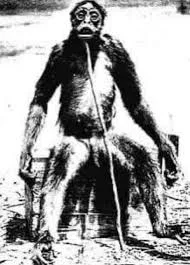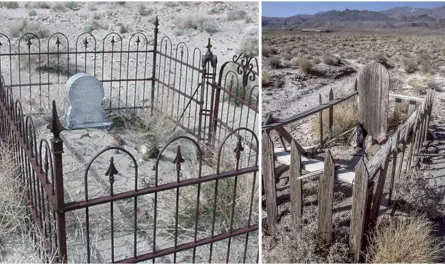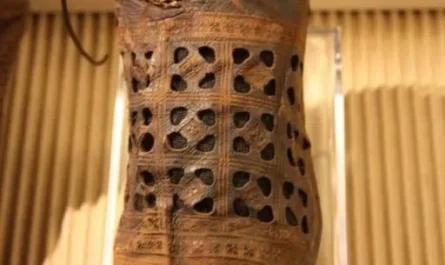With its towers, turrets, frescoes, and throne hall, Neuschwanstein Castle looks like it was plucked straight from a medieval fairy tale. But the truth is that this over-the-top palace nestled in the Bavarian Alps is not nearly as old as you might think.
After being defeated by Prussia in the 19th century, King Ludwig II of Bavaria was stripped of his powers and retreated into a private fantasy world where he could surround himself with opulent castles and live out his dreams of being a true, sovereign king. He commissioned the cliffside castle in 1868 but never saw it completed, dying before the final towers were completed in 1892. Following his sudden and mysterious death, the castle was opened to the public and would go on to become one of the most-visited castles in the world.
Curious to learn more? Read on for fascinating facts about Neuschwanstein Castle and everything you need to know to plan a trip.

Neuschwanstein Castle, which literally translates to “New Swan Stone” Castle, is located in the region of Bavaria in southeastern Germany. It was originally called New Hohenschwangau Castle, as it was meant to be a grand recreation of Hohenschwangau Castle, where Ludwig II spent his childhood. The older castle now sits in Neuschwanstein’s magnificent shadow.
The newer structure’s modern name, acquired after Ludwig II’s death, is thought to be a reference to the legendary swan knight. The mythical figure is a character in the opera “Lohengrin” by German composer Richard Wagner, who was a friend of the king. Travelers visiting Neuschwanstein Castle will need to first travel to the village of Hohenschwangau, where the ticket center is located.

Castles may have imposing silhouettes, but historically, they have never been extremely tall. However, Neuschwanstein Castle is the tallest castle in the world, with its highest tower reaching a height of 213 feet.

While the construction of Neuschwanstein Castle broke ground during the summer of 1868, the first foundation stone wasn’t laid until September 5, 1869. By 1873, parts of the castle could be occupied by Ludwig II, though he never lived to see his full vision realized. The Bower and Square Towers were completed in 1892, nearly a quarter of a century after work on the castle began, and many years after Ludwig II passed away and the castle was opened to the public.
According to plans, the castle was meant to have more than 200 rooms, but just over a dozen were finished before funds for the project were cut. Estimates put the total square footage at roughly 65,000 square feet.
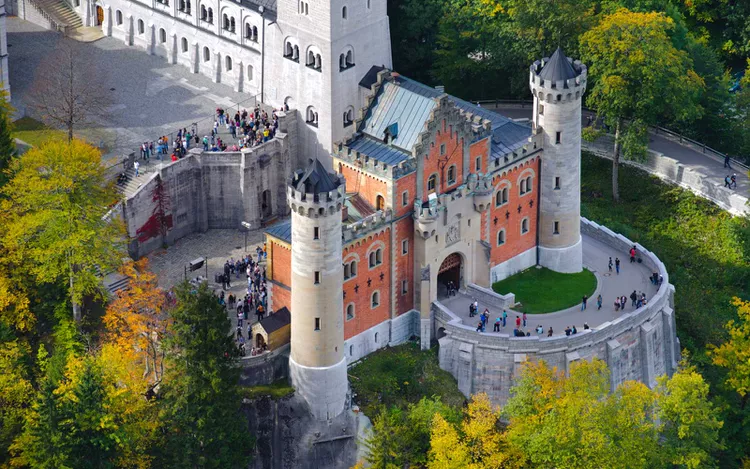
Neuschwanstein Castle is often called “the castle of the fairy-tale king” because Ludwig II had a reputation for being an eccentric recluse. In a letter to Wagner, Ludwig II said his intentions were to “rebuild the old castle ruin of Hohenschwangau…in the authentic style of the old German knights’ castles.”
He described “guest rooms with a splendid view of the noble Säuling, the mountains of Tyrol, and far across the plain,” and spoke of a Singer’s Hall and an ample castle courtyard. “This castle will be in every way more beautiful and habitable than Hohenschwangau,” Ludwig II told the composer.
That said, it is believed—almost without dispute—that Ludwig II built Neuschwanstein Castle for political and deeply personal reasons. In 1866, Prussia emerged victorious from the Austro-Prussian War, forcing Bavaria to accept an alliance with the empire. King Ludwig II of Bavaria essentially lost his power. It is thought that Neuschwanstein Castle became the centerpiece of Ludwig II’s imagined kingdom, where he could act as a true royal.
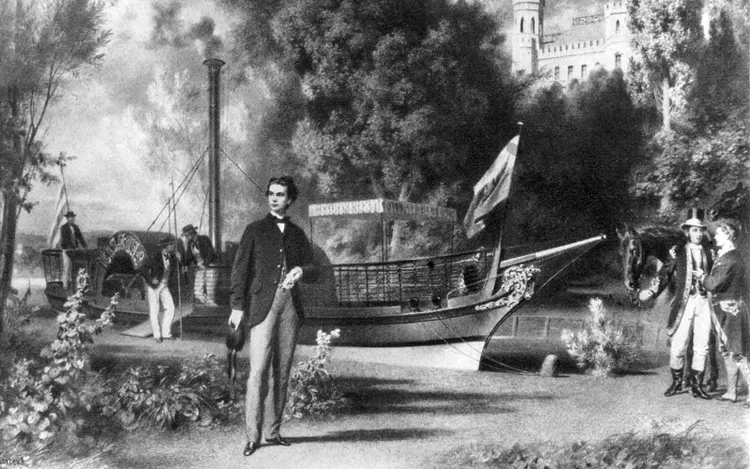
Before King Ludwig II of Bavaria found himself a servant to Prussia, he had a rather comfortable childhood at Schloss Hohenschwangau. His parents noted an inclination for play-acting (a proclivity that would only deepen in later years), and he was fond of the musical dramas created by the great German composer, Richard Wagner.
At the young age of 18, Ludwig II became King of Bavaria, but he would only reign for two years before Bavaria’s foreign policy and military powers were seized by Prussia.

With its white limestone façade and deep blue turrets, Neuschwanstein Castle is rumored to be the real-life inspiration for the castle in the Disney classic, “Cinderella,” released in 1950. The resemblance, after all, is striking.
But there’s another Disney castle that looks quite a bit like Neuschwanstein as well: Sleeping Beauty Castle in Disneyland. Before Walt Disney began constructing his California theme park, he and his wife took a trip to Europe that included a stop at Neuschwanstein Castle. The park confirms that Disney had Ludwig II’s remarkable home in mind for Sleeping Beauty’s fairy tale palace.

One of the highlights beyond the castle’s walls is Marienbrücke, the bridge which hangs over a waterfall and offers the most iconic views (and photo opportunities) of Neuschwanstein Castle. After your tour, be sure to spend some time checking out the forest trails around the castle, which provide countless opportunities to admire the surrounding Bavarian Alps.

Whether flanked by snow-covered peaks or gleaming in the summer sun, Neuschwanstein Castle is striking in any season. But with some 6,000 tourists on average streaming through the ramparts every day, visitors may want to avoid the peak summer months of July and August. If possible, schedule your Neuschwanstein Castle tour on a weekday or plan your visit in the off-season. With the exception of major holidays (around Christmas, for example), the number of visits drops significantly between November and April.

In the autumn, the Bavarian Alps are transformed by vibrant foliage, temperatures are mild, skies are relatively clear, and the summer crowds have dissipated. Munich is a popular home base for travelers who come to see Neuschwanstein and other beautiful Bavarian castles scattered throughout the region.

While a snow-covered Neuschwanstein Castle is the stuff of travelers’ dreams, it can be tricky to visit this time of year. One of the best viewpoints—Marienbrücke, or Mary’s Bridge—is typically blocked off during the winter, and the temperatures can plummet below freezing.
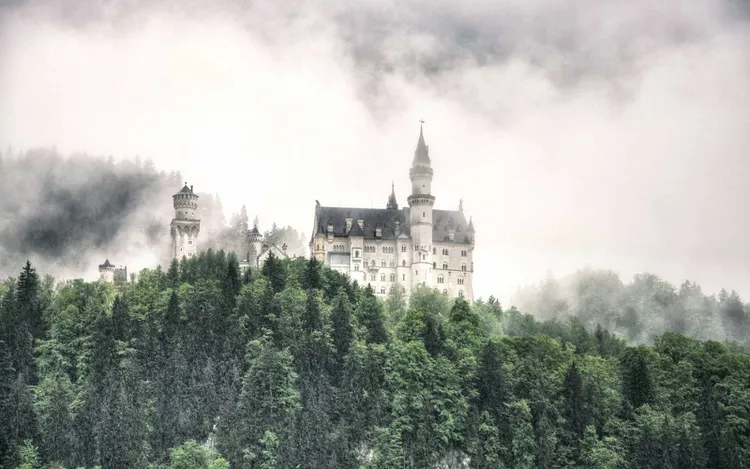
An off-season springtime trip to Neuschwanstein Castle in March or April will offer travelers pleasant weather, photographs of the white castle against a lush green backdrop, and some crowds. Travelers visiting in May or June will enjoy similar benefits during their shoulder-season tour of Neuschwanstein Castle.

Balmy weather, school holidays, and longer hours make Neuschwanstein Castle a particularly popular attraction in the summer. As such, visitors during peak months (July and August) should be prepared for considerable crowds and long lines.

Despite Ludwig’s grand plans, only 14 rooms are currently finished and on view for visitors. On the guided tour of Neuschwanstein Castle’s interior, you’ll have access to the cave-like grotto, the king’s bedroom, and the Singers’ Hall, among other interesting parts of the castle.

The King’s Dressing Room is one of the highlights of the tour, finished in rich gold and violet silks. Pay attention to the magnificent ceiling painting and murals illustrating the works of poets Walther von der Vogelweide and Hans Sachs.

Few rooms in Neuschwanstein Castle capture Ludwig’s obsession with being king quite as well as the Throne Hall. The two-story space highlights the majesty of Byzantine churches and is finished with a 13-foot-tall chandelier, a painted cupola, and elaborate floor mosaics. Ironically, there was never an actual throne in this space.
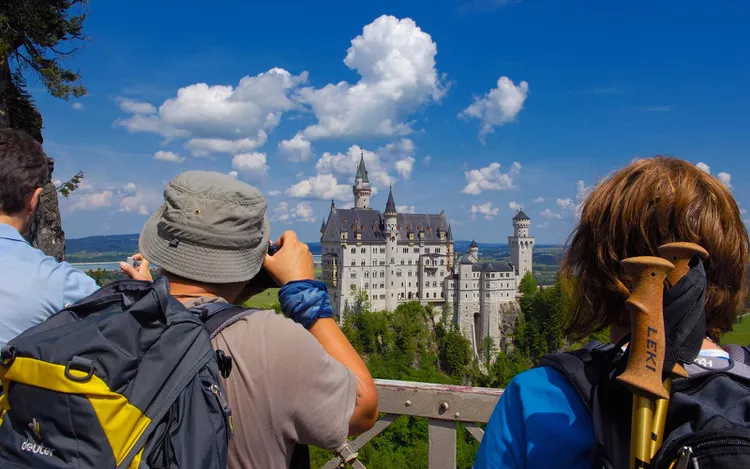
While tour groups arranged by the Bavarian Palace Department are the only way to see the interior of Neuschwanstein Castle, many tour companies do arrange day trips from Munich and other surrounding areas. To make the most of your time, look for tours that also stop at the nearby Linderhof Castle or Hohenschwangau, or include other activities like biking and swimming.

It’s a two-hour drive from Munich to Neuschwanstein, but buses and trains are also available. The A7 is the primary highway until Füssen or Kempten, and parking for Neuschwanstein Castle is located in the village of Hohenschwangau. Trains to Neuschwanstein Castle from Munich will go as far as Füssen, from where you’ll need to transfer to a local bus.

All travelers visiting Neuschwanstein will first arrive in Hohenschwangau, where you’ll find the ticket office and parking areas. From here, you can reach the castle on foot, or you can opt for one of the shuttle buses or horse-drawn carriages. Walking takes 30 to 40 minutes, and it’s a steep uphill climb. If you take the bus or carriage ride, know that you will still have a short 10- to 15-minute walk to the castle entrance. If there is snow or ice on the roads, the shuttle buses won’t be running, but you can still walk or get a carriage ride.

Neuschwanstein Castle tickets cost about $27 (23.50 EUR) for adults and $3 (2.50 EUR) for visitors ages 17 and younger. Audio guides may be available, but only at specific times. Tickets can be reserved online—recommended during peak seasons and holidays—or purchased at the Ticketcenter in Hohenschwangau.
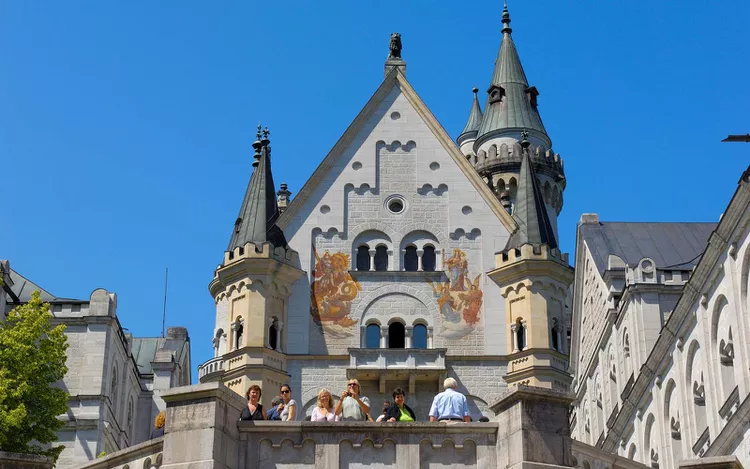
When you buy a ticket, you will reserve your entry with a guided tour at a specific time, which is the only way to access the castle interior. Tours are given in either English or German, but audio guides are available in 17 additional languages. Tours last approximately 30 minutes and include stops in the two-story throne room and the Tristan and Isolde-inspired bedroom, with a carved oak bed draped in blue silks.

Neuschwanstein Castle is open from 8 a.m. until 4 p.m. between April 1 and October 15. From October 16 through March, the hours are 8 a.m. until 3:30 p.m. The castle is open every day of the week, except for December 24, 25, and 31 and January 1.

The village of Hohenschwangau offers a few hotels for travelers who want to spend a night near the castle. For a romantic, fairy-tale experience of your own, consider the four-star Villa Ludwig, which has a spa and garden. For more lodging options on a castle-spotting trip to the region, you can base yourself in a larger Bavarian city, like Munich or Augsburg, each a few hours away by car.
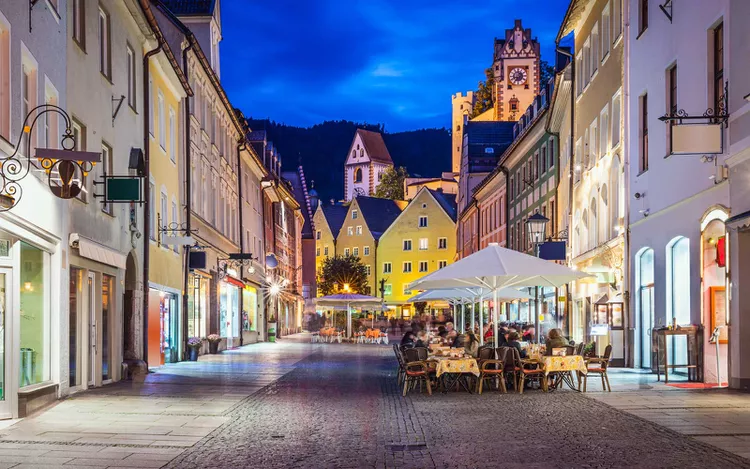
Visitors can eat in the castle at Neuschwanstein’s Café & Bistro, or at the eponymous Schlossrestaurant Neuschwanstein in the village. The latter boasts a sweeping terrace and gardens overlooking the castle. Craftsmen who built the castle reportedly dined at this site when it was a canteen back in the 19th century.

If you’re making the trek to Neuschwanstein Castle, be sure to also visit other nearby attractions related to the history of King Ludwig II. You can visit Linderhof Palace, another castle commissioned in 1868, as well as his childhood home, Hohenschwangau Castle.

If you have limited mobility, there is a reduced admission fee for disabled visitors, as well as an elevator inside the castle for accessing different floors. It’s not possible to drive up to the castle entrance, so visitors are required to take a shuttle bus or a carriage ride. And while the castle is one of the most photographed attractions in all of Germany from the outside, no photography is permitted inside.
Source: travelandleisure.com


